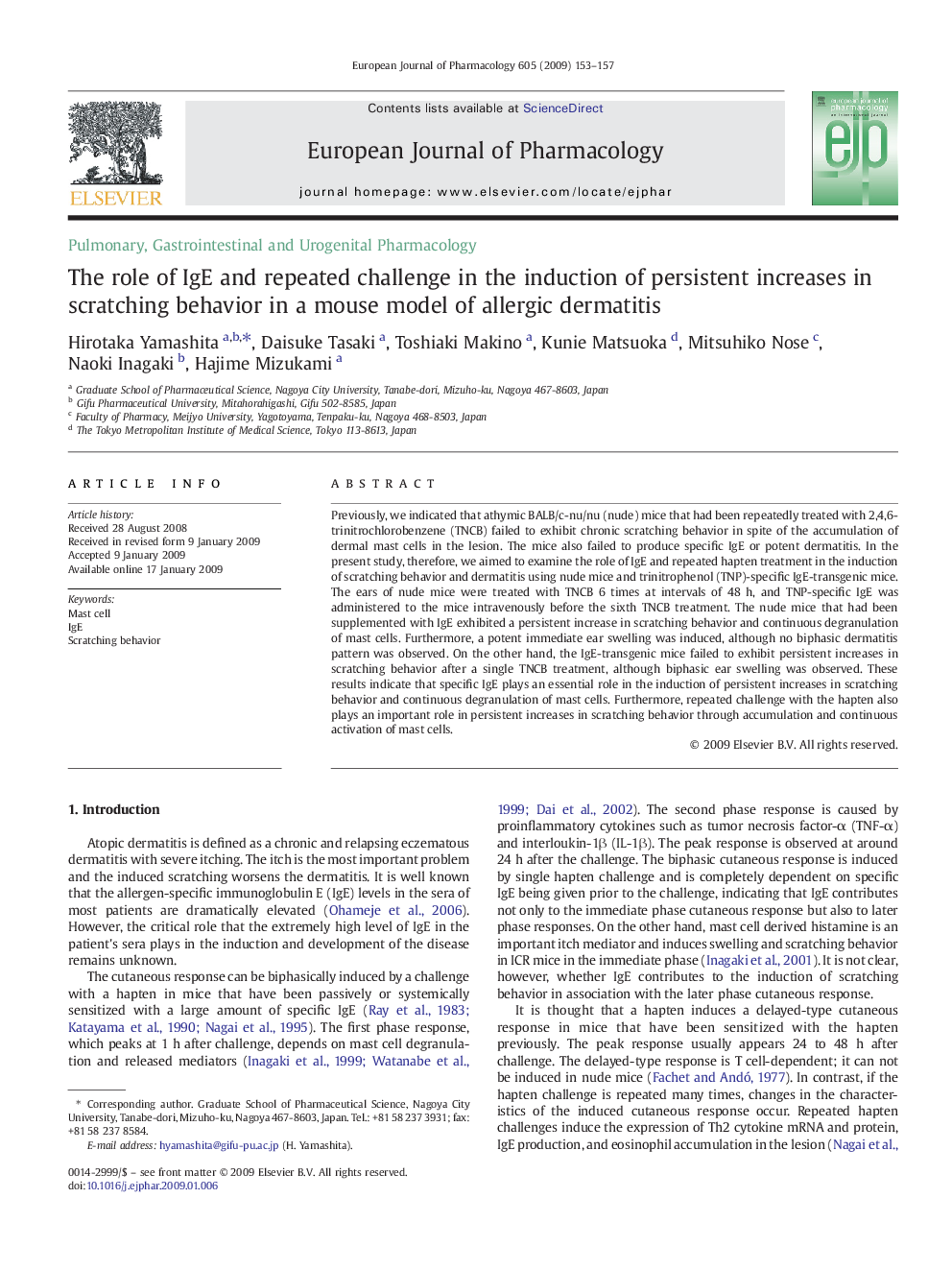| Article ID | Journal | Published Year | Pages | File Type |
|---|---|---|---|---|
| 2534674 | European Journal of Pharmacology | 2009 | 5 Pages |
Previously, we indicated that athymic BALB/c-nu/nu (nude) mice that had been repeatedly treated with 2,4,6-trinitrochlorobenzene (TNCB) failed to exhibit chronic scratching behavior in spite of the accumulation of dermal mast cells in the lesion. The mice also failed to produce specific IgE or potent dermatitis. In the present study, therefore, we aimed to examine the role of IgE and repeated hapten treatment in the induction of scratching behavior and dermatitis using nude mice and trinitrophenol (TNP)-specific IgE-transgenic mice. The ears of nude mice were treated with TNCB 6 times at intervals of 48 h, and TNP-specific IgE was administered to the mice intravenously before the sixth TNCB treatment. The nude mice that had been supplemented with IgE exhibited a persistent increase in scratching behavior and continuous degranulation of mast cells. Furthermore, a potent immediate ear swelling was induced, although no biphasic dermatitis pattern was observed. On the other hand, the IgE-transgenic mice failed to exhibit persistent increases in scratching behavior after a single TNCB treatment, although biphasic ear swelling was observed. These results indicate that specific IgE plays an essential role in the induction of persistent increases in scratching behavior and continuous degranulation of mast cells. Furthermore, repeated challenge with the hapten also plays an important role in persistent increases in scratching behavior through accumulation and continuous activation of mast cells.
